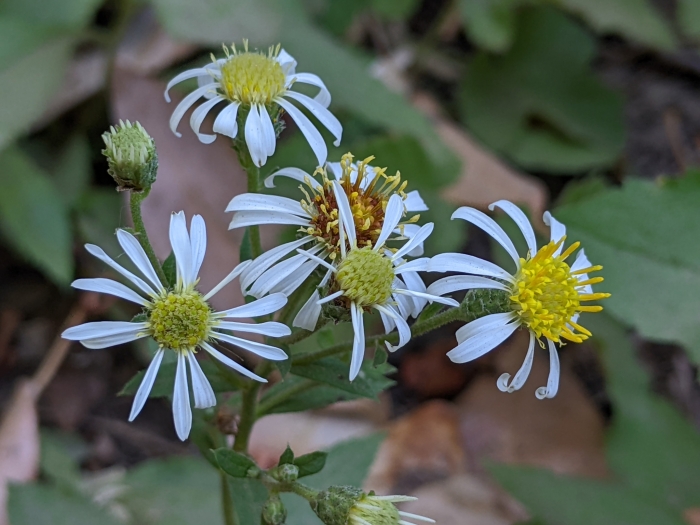Roughleaf Aster
(Eurybia radulina)
Roughleaf Aster (Eurybia radulina)
/
/

Ken-ichi Ueda
CC BY 4.0
Image By:
Ken-ichi Ueda
Recorded By:
Copyright:
CC BY 4.0
Copyright Notice:
Photo by: Ken-ichi Ueda | License Type: CC BY 4.0 | License URL: http://creativecommons.org/licenses/by/4.0/ | Rights Holder: Ken-ichi Ueda | Publisher: iNaturalist | Date Created: 2022-08-14T14:50:52-07:00 |






















Estimated Native Range
Summary
Eurybia radulina, commonly known as Roughleaf Aster, is an herbaceous perennial native to the Pacific Northwest of North America, specifically found in open woodlands, forest edges, and dry, rocky slopes west of the Cascade Range in British Columbia, Washington, Oregon, and California. It typically grows to a height of 1-3 feet (0.3-0.9 meters) and spreads 1-2 feet (0.3-0.6 meters) wide. The plant is characterized by its rough, hairy leaves and small, daisy-like flowers with purple rays and yellow centers that bloom from late summer to fall, adding a splash of color to the landscape when many other plants have finished flowering.
Roughleaf Aster is valued for its drought tolerance and ability to thrive in poor, rocky soils, making it an excellent choice for xeriscaping and naturalistic plantings. It is also used in restoration projects due to its adaptability and the role it plays in supporting pollinators. In cultivation, it prefers full sun to part shade and requires well-drained soil. While generally low-maintenance, it can be susceptible to powdery mildew in humid conditions. There are no widely recognized cultivars of Eurybia radulina, but its natural form is well-suited to informal garden borders and wildflower meadows.CC BY-SA 4.0
Roughleaf Aster is valued for its drought tolerance and ability to thrive in poor, rocky soils, making it an excellent choice for xeriscaping and naturalistic plantings. It is also used in restoration projects due to its adaptability and the role it plays in supporting pollinators. In cultivation, it prefers full sun to part shade and requires well-drained soil. While generally low-maintenance, it can be susceptible to powdery mildew in humid conditions. There are no widely recognized cultivars of Eurybia radulina, but its natural form is well-suited to informal garden borders and wildflower meadows.CC BY-SA 4.0
Plant Description
- Plant Type: Shrub, Herb
- Height: 2-3 feet
- Width: 1-2 feet
- Growth Rate: Moderate
- Flower Color: Pink, Purple, White
- Flowering Season: Summer, Fall
- Leaf Retention: Deciduous
Growth Requirements
- Sun: Part Shade
- Water: Medium
- Drainage: Medium
Common Uses
Bird Garden, Border Plant, Butterfly Garden, Low Maintenance, Showy Flowers
Natural Habitat
Native to open woodlands, forest edges, and dry, rocky slopes west of the Cascade Range
Other Names
Common Names: Rough-leaved Aster, Coarse-leaved Aster, Rough-Leaved Wood Aster
Scientific Names: , Eurybia radulina, Aster eliasii, Aster radulinus, Weberaster radulinus,
GBIF Accepted Name: